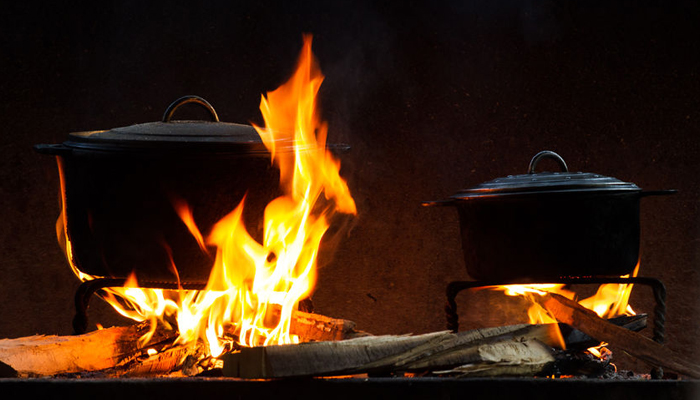
In the age of heat and eat foods, some people have lost the knack, if they ever had it to begin of cooking from scratch. In some kitchens, a microwave sees all the action, but when the lights go out will you starve. Will you starve when all the prepared and frozen foods are a melted mess rotting in the trash?
Will you starve when the propane for the stovetop runs out, you might, but if you have a Dutch oven and the means to start a fire you won’t starve? You will be okay as long as you have some basic ingredients in the pantry, a well-tended garden, and the ability to acquire fresh meat.
Cooking Basics
Mirepoix (pronounced meer-pwah) is the classic and most common French combination of onions, carrots, and celery. The Holy Trinity, on the other hand, is the Cajun/Creole version of Mirepoix which still uses onions and celery but substitutes green bell pepper for carrots.
Cooks realize that good food is all about the layering of flavor as the food cooks, and many dishes are cooked in stages, and what better cooking appliance for layering flavors than a Dutch oven.
In years past cooks usually had, just one pot to cook with, and it was usually over an open fire, and in some cases hung over the fire inside of a fireplace. All food was cooked in the same pot and nothing was ever wasted.
If you were to just place a roast inside of a Dutch oven over the coals with the lid on, the meat would not have the same visual appeal as a cut of meat cooked in a cast iron skillet over hot coals. You would not get the sear and the flavor. However, you can sear in a Dutch oven by preheating the oven and then add some olive oil, butter, or lard, and put the meat in without the lid.
One way of searing meat to seal in the flavors is to put the roast in a preheated oven with some oil or lard and cook without the lid long enough to sear the meat on both sides. Once you have the color you like, remove the meat and then add celery, carrots, and onions or bell peppers if you prefer to the juices left over.
You would “sweat” the vegetables without the lid on until they softened up. Once soft remove and pour in some red or white wine, or even a fruit juice of your choice to “de-glaze” the bottom of the pan. Let the pan get hot again and then add the meat to the juices left over from the deglazing process.
Put the vegetables you sweated back in the pot with the meat and then you can add whole potatoes, more carrots, cabbage, or any vegetable you prefer, along with whole garlic cloves slightly crushed. To keep the cabbage and potatoes from over cooking add them later in the cooking process. Add what spices you prefer. If using fresh herbs add them in the last 30 minutes of cooking.
If you just cook with the lid on it would be hard to get any color on the meat and the juices would make their way out of the meat and pool up on the bottom, essentially steaming the meat. Searing helps seal in the juices, and thus, the flavor, and when seared in a cast iron oven you will get that very distinct almost Smokey flavor. The vegetables will add flavor and variety, and when sweated the flavorful oils will come out when deglazed with an acid based liquid like wine or fruit juice.
This is not gourmet cooking this is off-grid cooking because the food you are cooking is what you are raising in your garden and it’s the livestock you have in the pen and the game you bring home from the hunt. It is all cooked in one pot over an open flame.
Once the meat is cooked, you can take the pan drippings and make a gravy or sauce. Remove the meat and then in a separate pan heat some oil and slowly stir in some flour to create Roux.
The longer you cook the Roux the darker it will get. If you are cooking chicken, for example, you may want the Roux to be “blonde” or if cooking a beef roast then a darker color may be preferred. Add the Roux a little at a time to the hot drippings. Add just enough to thicken, then remove from the heat and pour off.